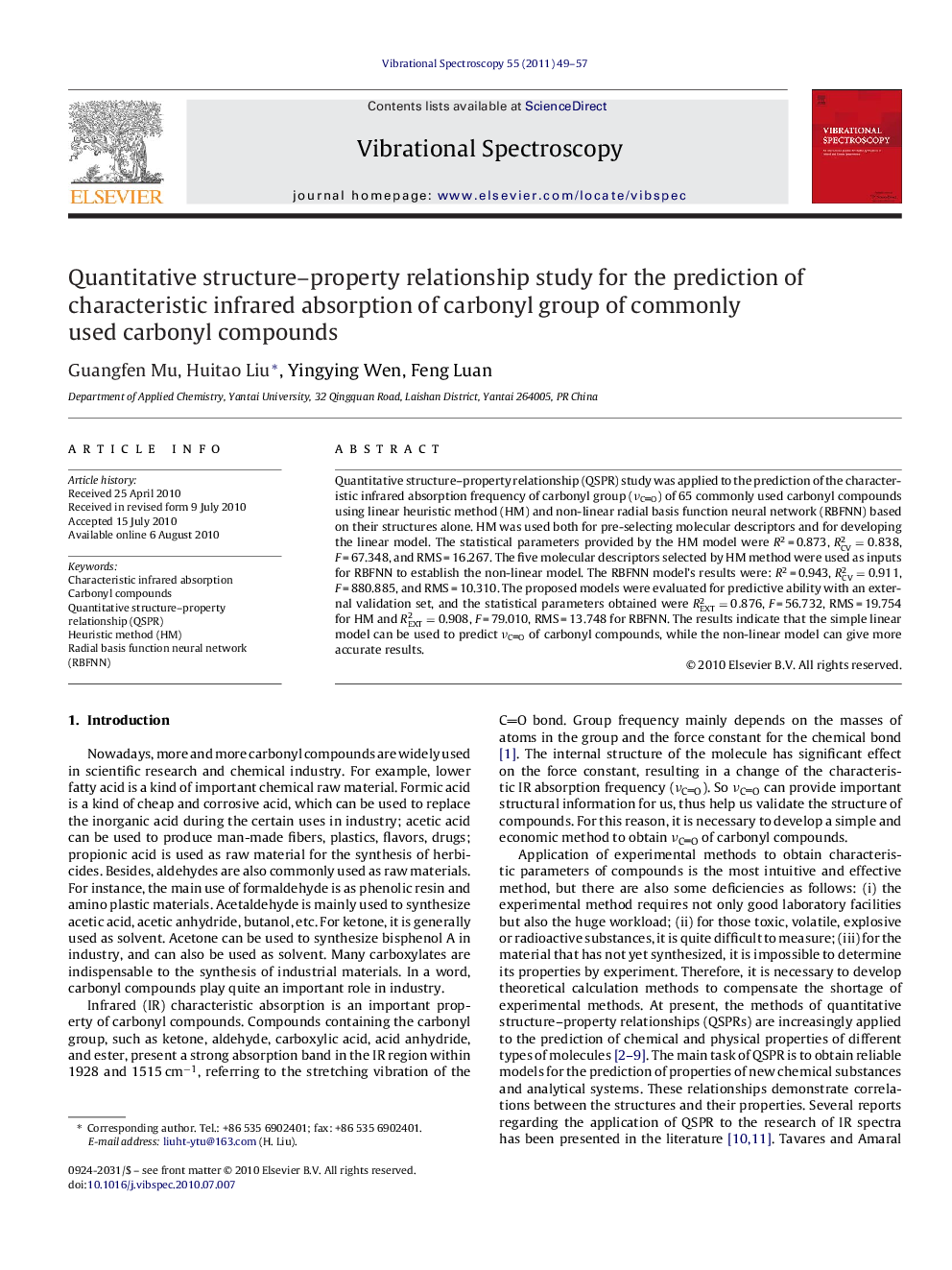| Article ID | Journal | Published Year | Pages | File Type |
|---|---|---|---|---|
| 1250282 | Vibrational Spectroscopy | 2011 | 9 Pages |
Quantitative structure–property relationship (QSPR) study was applied to the prediction of the characteristic infrared absorption frequency of carbonyl group (νCO) of 65 commonly used carbonyl compounds using linear heuristic method (HM) and non-linear radial basis function neural network (RBFNN) based on their structures alone. HM was used both for pre-selecting molecular descriptors and for developing the linear model. The statistical parameters provided by the HM model were R2 = 0.873, RCV2=0.838, F = 67.348, and RMS = 16.267. The five molecular descriptors selected by HM method were used as inputs for RBFNN to establish the non-linear model. The RBFNN model's results were: R2 = 0.943, RCV2=0.911, F = 880.885, and RMS = 10.310. The proposed models were evaluated for predictive ability with an external validation set, and the statistical parameters obtained were REXT2=0.876, F = 56.732, RMS = 19.754 for HM and REXT2=0.908, F = 79.010, RMS = 13.748 for RBFNN. The results indicate that the simple linear model can be used to predict νCO of carbonyl compounds, while the non-linear model can give more accurate results.
